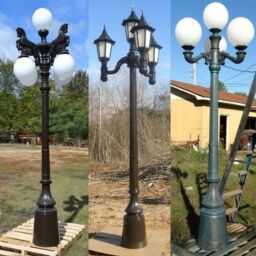
Spin casting is an ideal fishing method for beginning anglers. Spin-casting equipment is easier to use than bait casting. You can use it to cast both light and heavy lures without tangling or breaking your fishing line. Basic equipment includes a 7-foot rod, a spinning reel and 6 to 10 pound test line for casting 1/16 to 3/4 ounce lures. You can use an open-face, closed-face or spin-cast reel for spin casting.
Hold the rod at about waist level, grasping it so that the reel is below the rod, and the stem of the reel feels natural between your fingers. The bait or lure should be hanging 10-18 inches below the end of the rod.
Hook the line with your forefinger, and open the bail, continuing to hold the line.
Pull the rod tip back so the tip sweeps over your dominant shoulder, and then bring it forward swiftly pointing the rod tip at your target. As the rod comes forward of your shoulder release the line with your finger so the weight of the lure pulls line off the reel. Close the bail with your hand, and you’re ready to reel the lure back in again.
SET THE DRAG ON A SPINNING REEL
The drag is simply a pair of friction plates inside of fishing reels. If the fish pulls on the line hard enough, the friction is overcome, and the reel rotates backwards, letting line out, preventing the line from breaking. You want to set the drag on a fishing reel before your first cast of the day. Adjusting it while fighting a fish can be difficult. Also fishing reels are not designed to be adjusted while fishing, so doing so could cause damage.
The easiest way to set the drag on a spinning reel is to first test it by pulling on your line directly above the reel.
Tighten the drag a few clicks to the right, if the line pulls out too easily. If it’s too hard, loosen it one or two to the left.
If you don’t feel you can judge the force accurately, a small spring scale can help, such as the ones used in Boca Grips or other fish handling devices used in catch and release.
It’s better to have your drag too loose, and have to fight a fish a little longer than to have it too tight, and break off a big one.
If you are fishing with braided fishing line rather than monofilament, you’ll want to take a few wraps of line around the handle of your fishing pliers or a pencil instead of using your bare hands to test the drag. Braid will slice right into your fingers if you pull with too much force.
Once you’ve learned how to set the drag on a fishing reel, you’re ready to start casting.
Line
#Cast #Fishing #Line
Will be pleased to have you visit my pages on social networking .
Facebook page here.
Twitter account is here.
Linkedin account here
Post byBedewy for info askme VISIT GAHZLY








